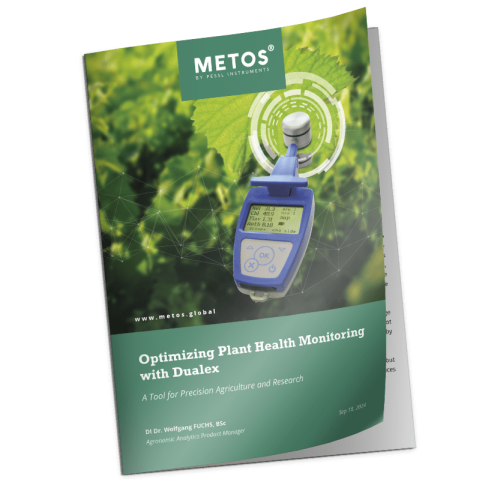A Tool for Precision Agriculture and Research
USE CASE – Optimizing Plant Health Monitoring
with Dualex
The Dualex leaf clip sensor offers a non-destructive method for assessing key plant health indicators, such as chlorophyll content and flavonols. Through real-time measurements, Dualex provides insights into plant nutrient status, stress response, and overall health.
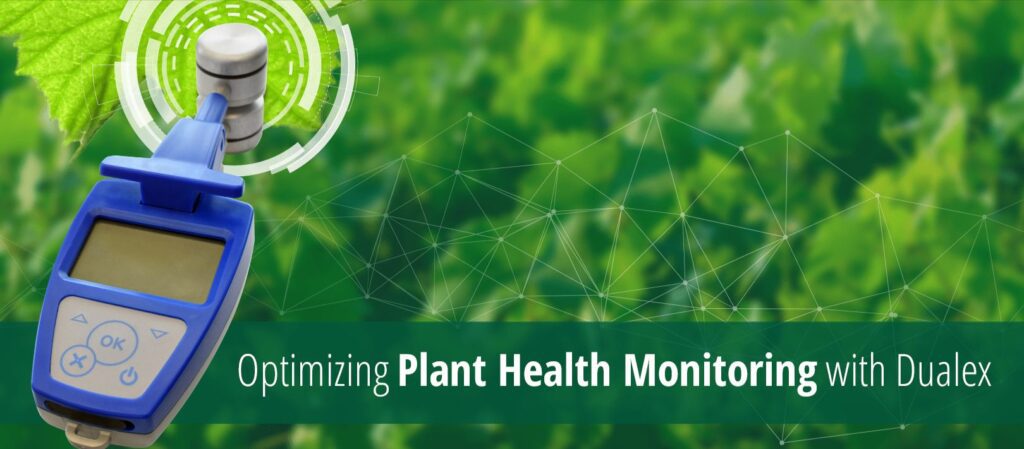
OVERVIEW OF THE PROBLEM
Monitoring plant health and nutrient status traditionally involves destructive sampling methods and time-consuming lab analyses. These approaches can be labor-intensive, delay real-time decision-making, and disrupt plant growth. Researchers and agronomists need a reliable, non- invasive solution to monitor chlorophyll levels, plant stress responses, and nutrient uptake efficiently in both field and controlled environments.
WHO IS IT FOR?
Dualex is designed for scientific researchers, crop specialists, and agronomists involved in plant health monitoring, nutrient management, and precision agriculture.
It’s particularly suited for those working with diverse plant species in settings ranging from greenhouses and potted plants to field crops, as well as for vegetables, orchards, and vineyards.
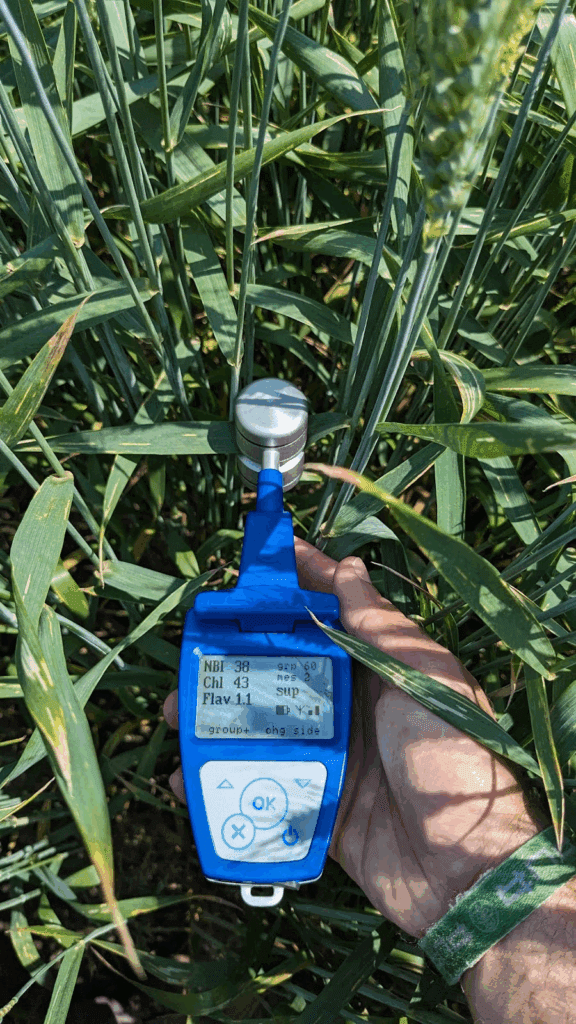
SOLUTION
Chlorophyll
Dualex effectively captures differences between crops over time.
The early decline in leaf chlorophyll content in peas can likely be attributed to nitrogen dilution, as seedlings grow, accumulate biomass, and exhaust nutrient resources stored in the seed.
The subsequent rise in chlorophyll levels observed in early May may indicate increased soil nitrogen mobilization driven by rising air and soil temperatures, affecting both pea and grapevine.
Poplar consistently exhibited higher chlorophyll content, which corresponds to its visibly darker green leaves.
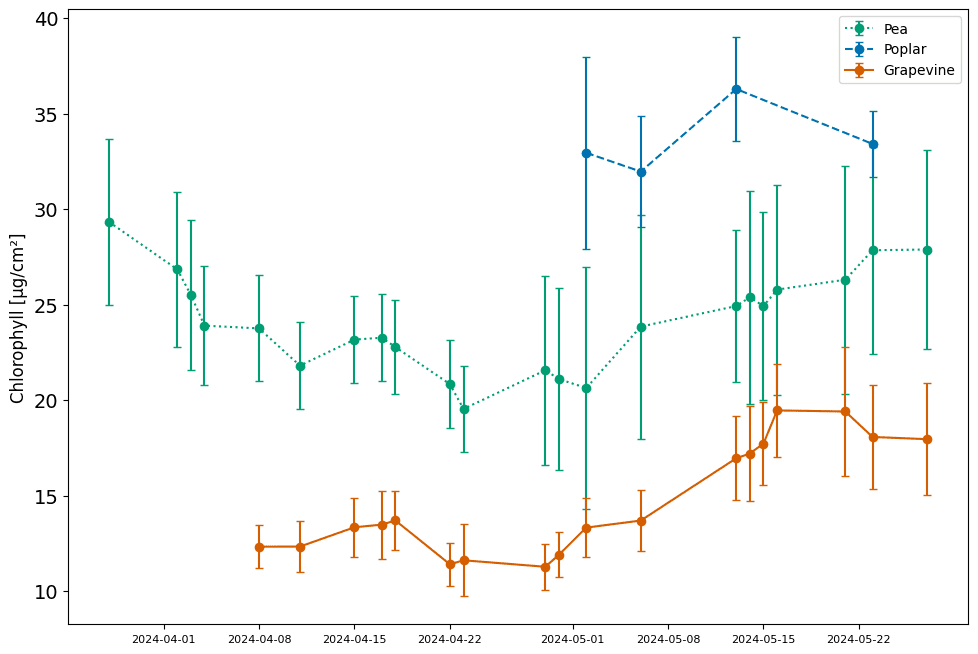
Flavonol
Flavonol is known for its UV-protection properties and tends to accumulate in higher concentrations in the upper leaf epidermis.
Dualex effectively captured the expected difference between the superior and inferior leaf surfaces of the grapevine.
The trends observed in both leaf sides followed largely parallel patterns, highlighting consistent behavior in flavonol distribution.
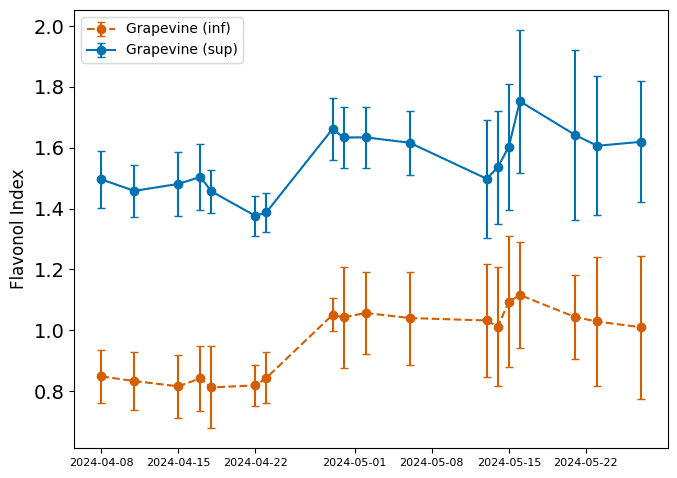
CONCLUSION
The examples demonstrate how Dualex accurately quantifies both visible and invisible leaf properties, aligning with expectations related to plant health and species-specific differences. Consequently, Dualex serves as an effective instrument for rapidly (<1 second) and non- destructively capturing leaf characteristics, offering significantly lower operating costs compared to traditional destructive methods.
Benefits & Advantages
NON-DESTRUCTIVE
Dualex allows for repeated measurements
without harming the plant, making it ideal
for longitudinal studies.
MULTI-PARAMETER MEASUREMENT
Provides simultaneous assessments of chlorophyll and flavonols in a single, efficient measurement.
VALIDATED PERFORMANCE
Dualex’s measurements correlate well
with traditional lab-based methods,
offering a more cost-effective solution.
REAL-TIME DATA
Each measurement takes less than
one second, enabling rapid data collection
for efficient monitoring.
VERSATILE APPLICATIONS
Useful for monitoring plant health,
assessing nutrient status, and studying
plant responses to environmental stressors.
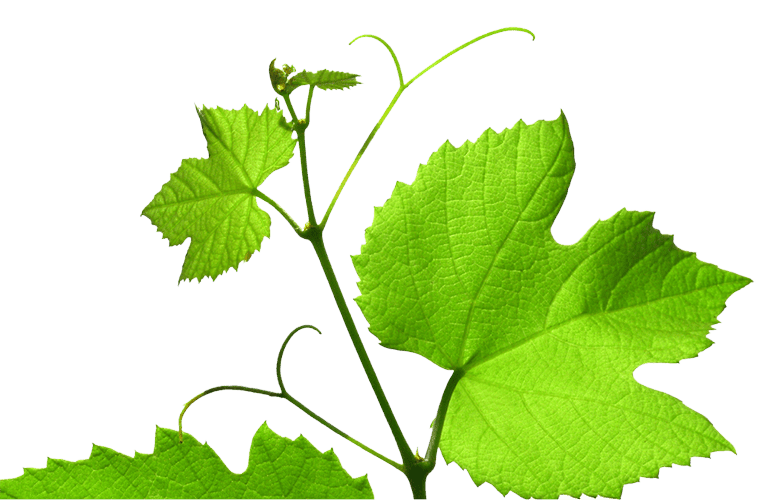
Want to learn more?
Download our brochure for a lot more detailed and scientifically-backed insights!
